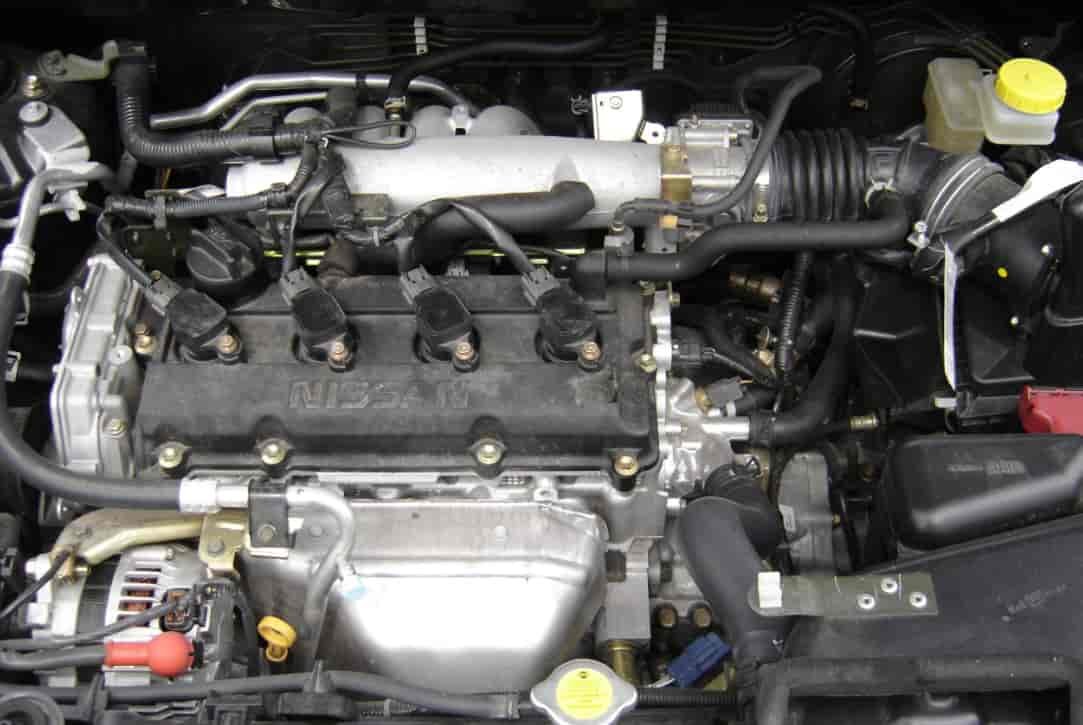Have you ever noticed your Nissan X-Trail hesitate, shudder, or make a strange whining noise while driving? These could be early signs of transmission issues, one of the most common concerns among X-Trail owners worldwide. The Nissan X-Trail is known for its practicality, comfort, and fuel efficiency, but beneath that reputation lies one recurring challenge that many drivers have faced over the years: the transmission.
The Nissan X-Trail primarily uses a CVT, or Continuously Variable Transmission, which is designed to deliver smooth acceleration and better fuel economy. However, when this system begins to fail, the results can be both frustrating and costly. Drivers often report slipping gears, delayed engagement, or even total transmission failure before 100,000 kilometers.
This article explores the most common Nissan X-Trail transmission problems, the real causes behind them, the warning symptoms every owner should recognize, and the expert fixes that can restore your vehicle’s performance. Whether you already own an X-Trail or are planning to buy one, understanding these issues will help you protect your investment and avoid expensive surprises on the road.
Understanding the Nissan X-Trail Transmission System
To understand the root of Nissan X-Trail transmission problems, it is essential to first know how the system works. The X-Trail is equipped with a Continuously Variable Transmission, commonly known as a CVT. Unlike traditional automatic gearboxes that shift between fixed gear ratios, a CVT uses a belt and pulley mechanism to provide seamless acceleration without noticeable gear changes. This design is meant to optimize fuel efficiency and maintain smooth driving performance under various conditions.
However, the same technology that provides smoothness can also become its weakness over time. The metal belt inside the CVT endures constant tension and friction, especially during city driving or heavy load situations. When the transmission fluid degrades or overheats, the belt can slip, leading to jerking sensations and inconsistent acceleration. This process gradually wears out the pulleys and bearings, causing the transmission to lose efficiency.
Another critical factor is the cooling system. Many Nissan X-Trail models rely on a compact transmission cooler that struggles to handle extreme temperatures, particularly in warm climates. Once the CVT overheats, it may trigger safety modes that limit engine power or create delayed gear responses. Understanding these mechanisms helps explain why even regular maintenance might not completely prevent issues if the design itself is sensitive to heat and fluid degradation.
Common Nissan X-Trail Transmission Problems
Over the years, thousands of Nissan X-Trail owners have reported recurring transmission issues, especially with models using the CVT system. While some problems appear minor at first, they often progress into major mechanical failures if not addressed promptly. Below are the most frequently observed issues among X-Trail drivers.
1. Shuddering and jerking during acceleration
This is one of the earliest and most recognizable signs of a CVT issue. Drivers often feel a strong vibration or hesitation when accelerating from a stop. This occurs when the transmission belt slips due to worn pulleys or low-quality fluid that has lost its lubricating properties.
2. Transmission overheating
The CVT in the X-Trail is highly sensitive to heat. Extended driving in traffic or on steep terrain can cause the system to overheat. When that happens, the car may enter “safe mode” to protect the transmission, limiting speed and power output.
3. Delayed gear engagement or slipping
Some owners report a delay when shifting from Park to Drive or Reverse. In severe cases, the transmission seems to “slip” under acceleration, as if the vehicle is losing power. This often points to worn internal components or insufficient fluid pressure.
4. Whining or grinding noises
High-pitched whining noises from the transmission area usually indicate belt wear or bearing failure. The sound tends to increase as the vehicle speeds up, signaling internal mechanical damage.
5. Complete CVT failure before 100,000 kilometers
The most serious issue is total transmission breakdown. Once the belt or pulleys are heavily damaged, the entire CVT may need replacement, costing several thousand dollars.
Causes Behind X-Trail Transmission Problems
Understanding why Nissan X-Trail transmission problems occur requires a closer look at both design and driving conditions. While the CVT aims to deliver smooth and efficient performance, several underlying factors make it prone to failure over time.
1. Overheating and fluid degradation
The most common cause of transmission issues in the X-Trail is overheating. The CVT fluid is responsible for both lubrication and cooling, but it can deteriorate quickly under heavy use. When fluid temperature rises above optimal levels, it loses viscosity and fails to protect the belt and pulleys. Prolonged overheating leads to slipping, jerking, and eventual mechanical wear.
2. Worn pulleys and belt deterioration
Inside the CVT, the metal belt constantly adjusts to create an infinite range of gear ratios. Continuous tension and friction gradually wear down the pulleys, especially if the vehicle is frequently driven in stop-and-go traffic. Once the belt begins to wear unevenly, it creates a jerky driving experience and reduces efficiency.
3. Poor software calibration
Many X-Trail models have experienced transmission lag due to transmission control module (TCM) programming issues. Incorrect calibration can cause delayed engagement, sudden jerks, or inconsistent power delivery. Some of these issues have been addressed through software updates from Nissan dealerships.
4. Aggressive driving and heavy loads
Driving habits also play a major role. Sudden acceleration, towing heavy loads, or frequent hill driving put extra stress on the CVT components. Over time, this accelerates fluid breakdown and internal wear.
In short, the combination of heat, wear, and calibration flaws explains why Nissan X-Trail transmission problems are so persistent, even in well-maintained vehicles.
Symptoms That Indicate Transmission Failure
Recognizing the early symptoms of transmission failure can save Nissan X-Trail owners from costly repairs. The transmission often gives warning signs long before a complete breakdown occurs, but many drivers overlook them until it is too late. Understanding these indicators helps you act quickly and prevent further damage.
1. Jerking or hesitation while accelerating
If your X-Trail shakes, shudders, or hesitates when you press the accelerator, this is one of the first warnings that the CVT may be struggling. The feeling is often described as a vibration or a short pause before the car responds.
2. Delayed gear response
When shifting from Park to Drive or Reverse, a noticeable delay or lack of engagement can indicate internal fluid pressure issues or control module errors. In some cases, the car may fail to move immediately even though the engine is running smoothly.
3. Whining or humming noises
A high-pitched whining sound while accelerating or cruising is a common symptom of belt or bearing wear inside the transmission. This noise typically becomes louder as the transmission deteriorates.
4. Transmission overheating warning
The dashboard may display a transmission temperature warning light if the CVT overheats. Once activated, the system may automatically reduce power to protect itself, leading to sluggish performance and limited acceleration.
5. Check Engine Light or limp mode activation
A persistent Check Engine Light accompanied by loss of power usually means the transmission control module has detected a serious fault. When this happens, the car may enter limp mode, restricting speed and gear function.
Detecting these symptoms early allows owners to perform timely maintenance and avoid a full transmission replacement, which is often the most expensive outcome.
Expert Fixes and Repair Options
When facing Nissan X-Trail transmission problems, the best solution depends on the severity of the issue and how early it is detected. Expert mechanics usually recommend one of three main repair options, each varying in cost, complexity, and long-term effectiveness.
1. Fluid change or transmission flush
If the transmission problem is caught early, changing the CVT fluid can often resolve minor jerking and overheating symptoms. Old or contaminated fluid loses its cooling and lubricating ability, which causes friction and slipping. A complete flush replaces nearly all the fluid inside the system, helping restore smoother gear transitions. The typical cost ranges from 150 to 300 USD depending on the workshop and region.
2. Software update or control module reprogramming
Some X-Trail models suffer from poor calibration in the transmission control module, leading to slow response or inconsistent shifting. Nissan has released software updates for specific models that improve performance and reduce lag. If your vehicle has not received this update, visiting a certified dealer for reprogramming is highly recommended. The service is usually affordable and can prevent further wear.
3. Transmission rebuild or full replacement
When mechanical components such as the belt or pulleys are heavily worn, a complete rebuild or replacement becomes necessary. Rebuilding involves replacing damaged parts while keeping the original casing, while a full replacement installs a new or remanufactured CVT unit. The cost can range from 2500 to 5000 USD, depending on labor rates and parts availability.
4. Expert recommendation
Specialists suggest that once a CVT starts showing consistent slipping, whining, or overheating despite fluid changes, replacement is the safest and most reliable choice. While expensive, it ensures long-term reliability and restores the vehicle’s performance. Preventive maintenance afterward is key to extending the lifespan of the new transmission.
Preventive Maintenance Tips
Preventing Nissan X-Trail transmission problems is always more effective and affordable than fixing them after failure. Proper care and driving habits can significantly extend the life of your CVT and reduce the risk of expensive repairs.
1. Follow the correct fluid change interval
Nissan recommends replacing CVT fluid approximately every 60,000 kilometers or sooner in demanding conditions such as city driving or hot climates. Always use genuine Nissan NS-3 fluid or its approved equivalent, since using the wrong type can cause premature wear and poor performance.
2. Keep the cooling system in good condition
Because the X-Trail’s transmission is sensitive to heat, maintaining the radiator and transmission cooler is essential. Clean any debris from the radiator fins and ensure proper coolant levels. In tropical or high-temperature regions, installing an auxiliary cooler can greatly reduce overheating risks.
3. Avoid aggressive driving and overloading
Rapid acceleration, towing heavy loads, or constant uphill driving put extreme pressure on the CVT components. Smooth acceleration and moderate speeds help maintain stable fluid temperature and reduce belt wear.
4. Perform regular diagnostics
Having the transmission scanned for fault codes during routine servicing allows early detection of potential problems. Even minor errors in the control module can be corrected before they lead to mechanical damage.
Consistent preventive maintenance not only extends the lifespan of the transmission but also ensures smoother driving performance and improved fuel efficiency throughout your Nissan X-Trail’s life cycle.
Conclusion
Nissan X-Trail transmission problems have affected many owners around the world, but understanding the real causes and symptoms can make all the difference in preventing major failures. Most of these issues arise from overheating, worn components, and neglected maintenance, all of which can be minimized with proper care and timely service.
Recognizing early warning signs such as jerking, delayed shifting, or whining noises allows you to act before the situation becomes serious. Routine CVT fluid changes, accurate diagnostics, and gentle driving habits are simple yet powerful ways to extend your transmission’s lifespan.
For vehicles already showing severe symptoms, professional repairs or a full CVT replacement may be the best long-term solution. Though it can be costly, restoring your transmission ensures reliability, safety, and peace of mind on every journey.
In the end, the key to avoiding Nissan X-Trail transmission problems is awareness and consistent preventive maintenance. By treating the transmission as the heart of the drivetrain rather than a hidden component, you can keep your X-Trail performing smoothly for years to come.

